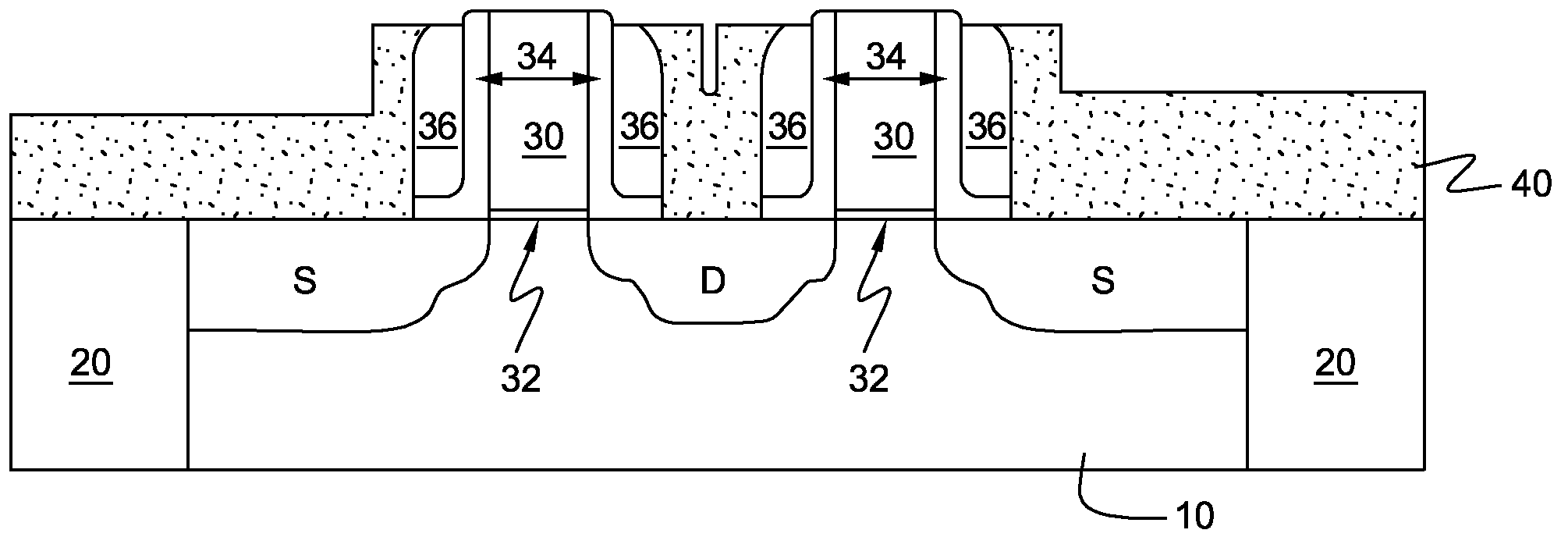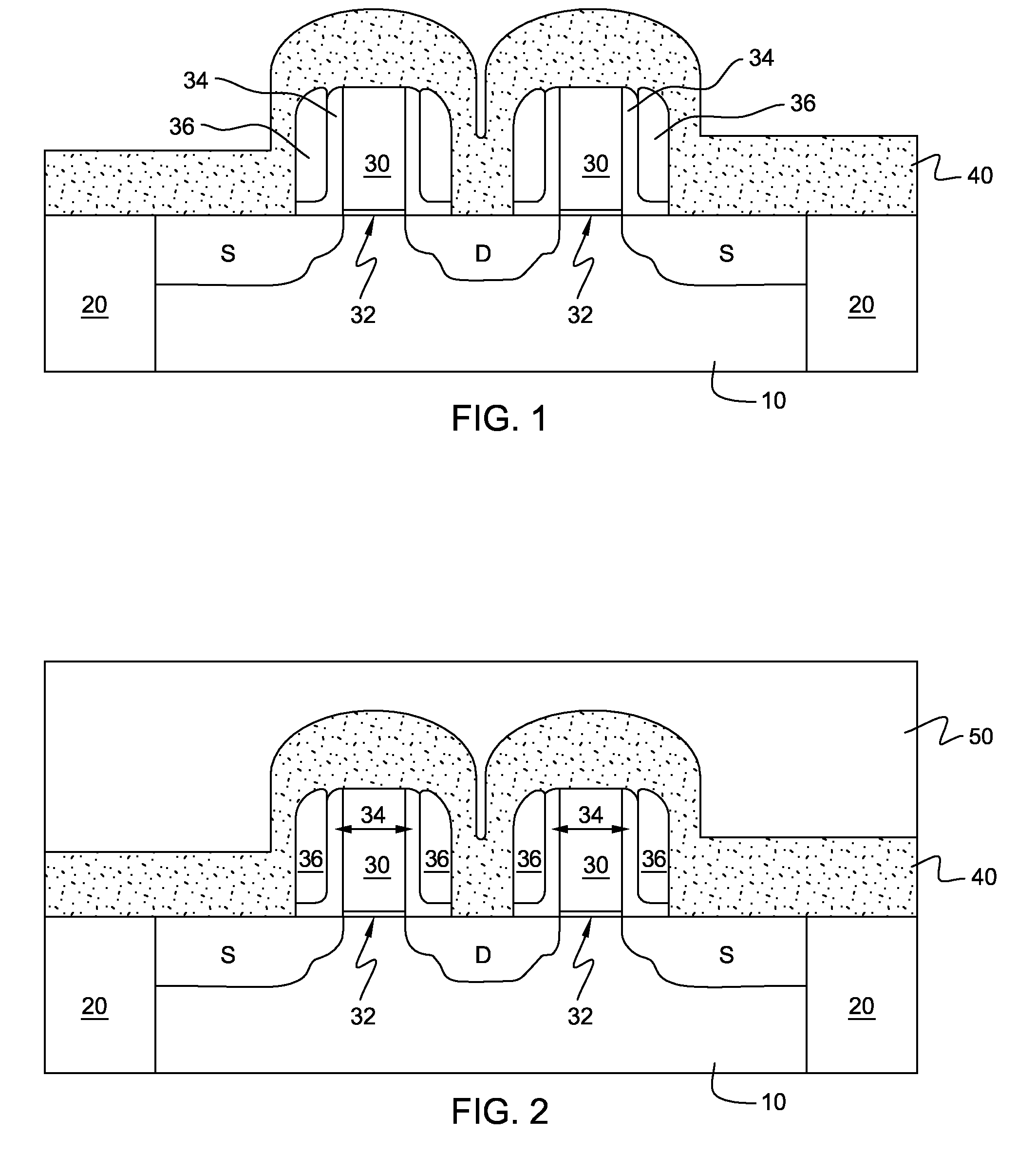Method and structure for reducing induced mechanical stresses
a mechanical stress and mechanical stress technology, applied in the field of semiconductors, can solve the problems of affecting the performance of the nfet, requiring numerous additional processing steps, time-consuming and expensive, and requiring additional materials, etc., to avoid degradation of the performance of the second fet device, and improve the performance of the first fet device
- Summary
- Abstract
- Description
- Claims
- Application Information
AI Technical Summary
Benefits of technology
Problems solved by technology
Method used
Image
Examples
Embodiment Construction
)
[0024]In describing the preferred embodiment of the present invention, reference will be made herein to FIGS. 1-8 of the drawings in which like numerals refer to like features of the invention.
[0025]Referring to the drawings, FIG. 1 shows a cross sectional view of a portion a semiconductor device having a transistor body with a pair of NFET devices. The semiconductor is formed by conventional techniques using a substrate 10 of any known material including silicon, strained silicon, silicon germanium, germanium, silicon on insulator, or any other semiconductor substrate. An isolation device 20, such as shallow trench isolation (STI), is formed on the substrate 10 for defining n-well and p-well regions of the substrate.
[0026]A gate dielectric 32 along with the gate electrodes 30 are formed over the substrate by known techniques. For instance, first a gate dielectric layer is grown or deposited over the substrate followed by deposition of a semiconductor, metal, or silicide material (...
PUM
 Login to View More
Login to View More Abstract
Description
Claims
Application Information
 Login to View More
Login to View More - R&D
- Intellectual Property
- Life Sciences
- Materials
- Tech Scout
- Unparalleled Data Quality
- Higher Quality Content
- 60% Fewer Hallucinations
Browse by: Latest US Patents, China's latest patents, Technical Efficacy Thesaurus, Application Domain, Technology Topic, Popular Technical Reports.
© 2025 PatSnap. All rights reserved.Legal|Privacy policy|Modern Slavery Act Transparency Statement|Sitemap|About US| Contact US: help@patsnap.com



